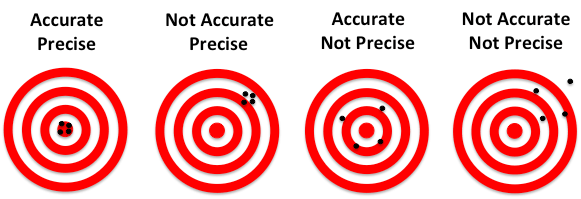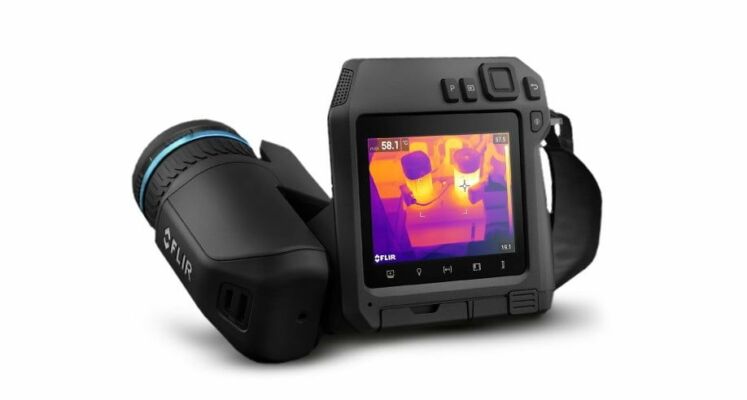When selecting a thermal imaging camera, there are several technical factors that influence your choice. For example, the resolution. But why is resolution so important in thermography?
Thermal resolution
Thermal resolution consists of the number of pixels on the sensor. With a higher resolution, each image contains more information. This increases the chance of obtaining accurate measurements.
During these measurements, the camera takes the average of several pixels to determine the temperature. For older systems this was 3×3 pixels, in modern devices we better count with 5×5 pixels.
Spatial resolution
The spatial resolution of a thermal imaging camera is based on the number of pixels and the image reaching the sensor. Together, they determine how accurate the temperature measurements are.
There are three components that influence the spatial resolution:
- Field of View (FOV): the maximum area that the sensor can ‘see’. The FOV is determined by the distance and the lens.
- Instantaneous Field of View (IFOV): the smallest detail detectable within the FOV. The IFOV determines how much a single detector pixel sees.
- Measurement Field of View (MFOV): the smallest detail that can be accurately measured. When the distance to the object increases, this accuracy decreases.
Let us illustrate the difference between these components with an example.
Imagine you are driving on a motorway. What you see through the windscreen is your Field of View (FOV). After a while a billboard appears in the distance. You see the sign but cannot read the text because the distance is too large. That is the Instantaneous Field of View (IFOV). As you get closer, the text becomes readable. This is called the Measurement Field of View (MFOV) – the maximum distance to measure.
Ultramax/Super resolution
Ultramax, also known as super-resolution, is a way of increasing resolution using software. The camera takes several images and superimposes them. For example, it takes a 640×480 image and makes it 1280×960. This is an image enhancement, but it does not have the same quality as an image from a camera with a sensor whose resolution is 4x higher.
Examples of the difference in resolution in thermography
The difference between low and high resolution thermal imaging cameras gets immediately clear with the examples below.
This thermal image was made with a 640×480 detector:
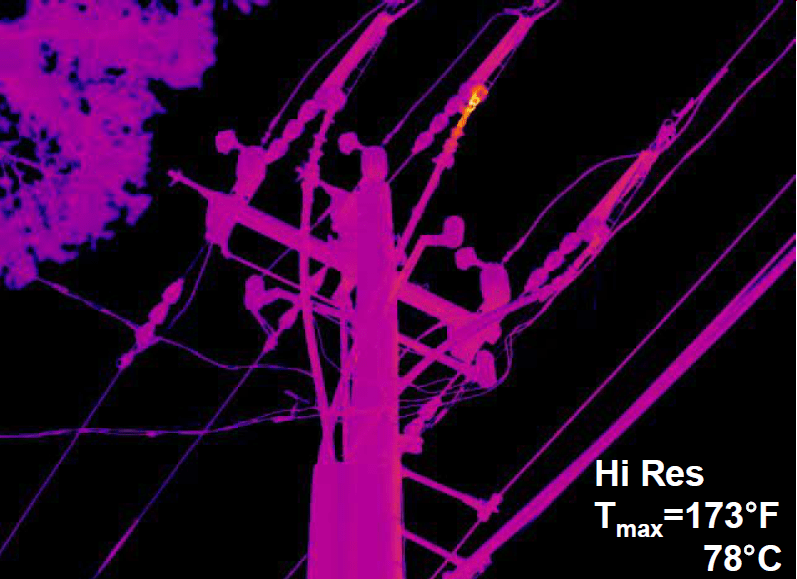
The picture below is from a 320×240 detector:
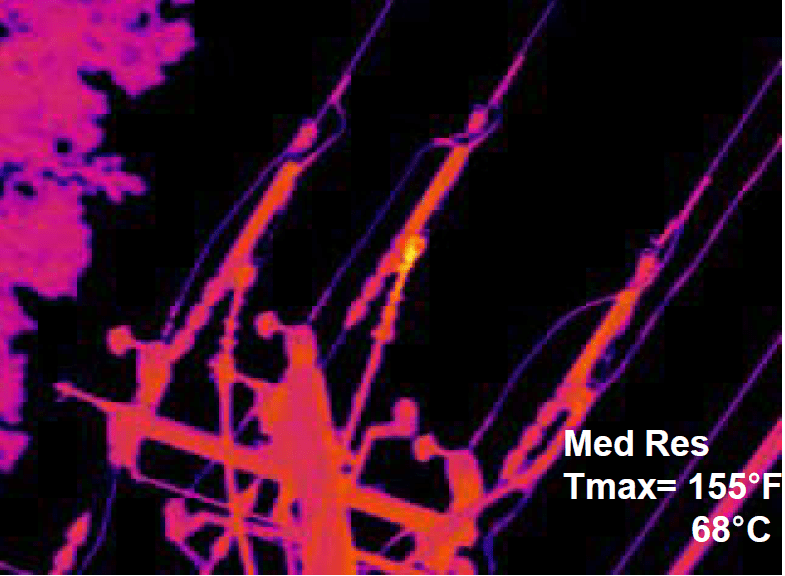
What is immediately noticeable is that in the hi-res photo much more detail is visible. It is easier to identify problems. There is also a serious difference in the measured temperatures (78 °C vs 68 °C).
The difference between different resolutions is even greater in the following measurement of a transformer:
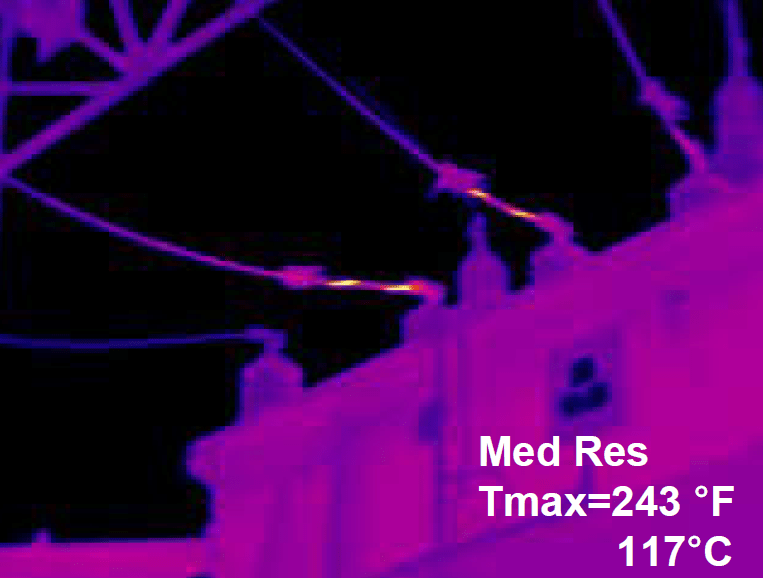
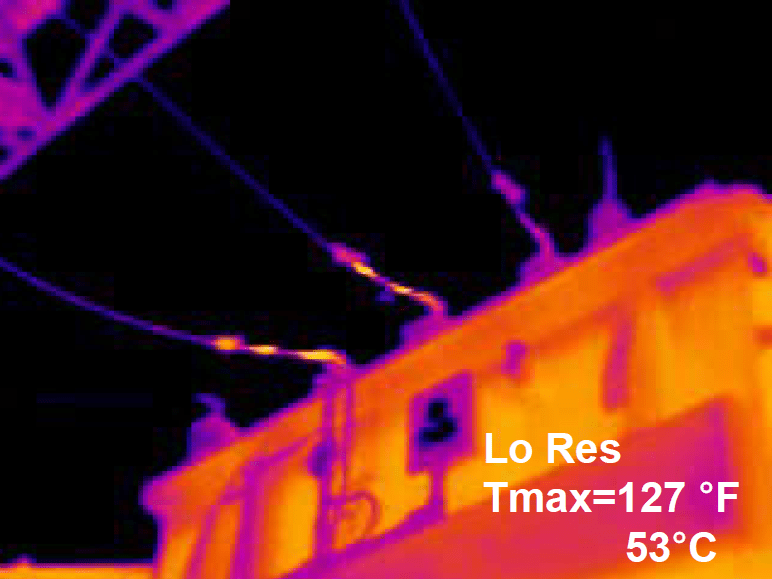
(Source images from FLIR ITC)
The resolution of the lower thermal camera is not really suitable for this measurement. The average temperature measured there is drastically lower than the actual temperature due to the cold background radiation from the sky. This would underestimate the seriousness of the situation.
We can help you determine which resolution and lenses are needed to make reliable measurements in your application.
The choice is usually determined by a combination of lens and detector, as well as the versatility in which the camera is to be used. A camera can have a good accuracy. But if too few pixels cover the region of interest, an incorrect measurement will be the result.
Andere interessante artikels
In 6 steps to the right thermal imaging camera
In our range there are dozens of thermal imaging cameras with various specifications. Thus, there is a suitable model for every application, which we find using 6 questions.

